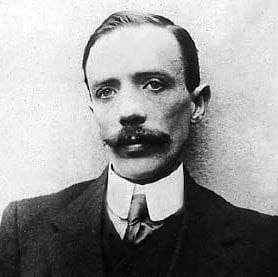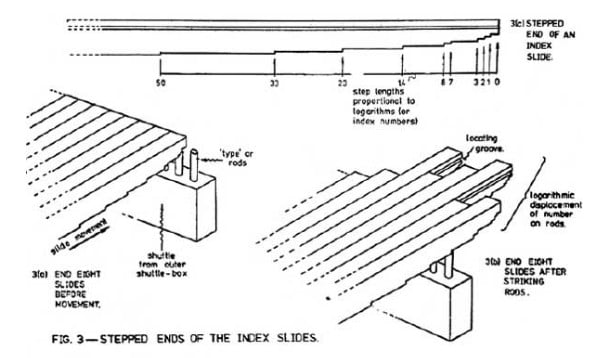Throughout history, humans have made independent, more or less simultaneous discoveries and inventions. For example, Sir Isaac Newton and Gottfried Leibniz discovered calculus, Charles Darwin and Albert Russel Wallace described natural selection, and Henry Fox Talbot and Louis Daguerre invented the first practical types of photography.
While mathematician Charles Babbage first proposed his Analytical Engine, a general-purpose mechanical computer in 1837, in 1909 Percy Ludgate, who had never been exposed to Babbage’s invention, came up with the concept of an “analytical machine.” After Ludgate finished his first design of the Analytical Engine, he learned of Babbage’s work and was “greatly assisted” by the “writings of that accomplished scholar.”
Quick Facts
- Full Name
- Percy Fudgate
- Birth
- August 2, 1883
- Death
- October 16, 1922
- Net Worth
- N/A
- Awards
- Trinity’s best final year project in Moderatorship in a computer science course.
- Children
- N/A
- Nationality
- Irish
- Place of Birth
- Skibbereen, Ireland
- Fields of Expertise
- [“Inventor”,”Finance”,”Accountancy”]
- Institutions
- North Strand Parish School, Rathmines College of Commerce, Dublin.
- Contributions
- The Second Analytical Engine in History Design, Mechanical Computer Design, And Discrete Logarithms.
Who Was Percy Ludgate?
Percy Ludgate, born on August 2, 1883, was an Irish amateur scientist popular for designing the second analytical machine in history. The analytical machine is now referred to as the general-purpose Turing-complete computer. Percy died on October 16, 1922, aged 39.

©Public domain, from Wikimedia Commons, the free media repository – Original / License
Percy Ludgate, during his lifetime, was an interesting figure in the world of calculating machines. He started in 1903 by working on his hobby (calculating machines) nightly, until the small hours, and initially completely independently by Charles Babbage, he managed to design a fascinating and original universal calculating engine. As Brian Randell wrote, “One must wonder just how much more he might have achieved if he had just a modest fraction of the resources available to Babbage (to say nothing of Aiken!) and had not succumbed to pneumonia at such a tragically early age.”
Key Difference Between Babbage’s Analytical Engine and Ludgate’s
Like Babbage, Ludgate was unable to obtain funding to build his Analytical Engine. While neither machine was ever built, it’s easy to compare the two based on their respective inventor’s designs. For instance, Ludgate’s Analytical Engine would have been significantly smaller than Babbage’s. Instead of using bulky columns of wheels like Babbage’s machine, Ludgate’s was designed to store variables on “shuttles.” Moreover, Ludgate’s machine would have handled only 192 variables of 20 figures each, while Babbage’s would have handled 1,000 variables of 50 figures each.
Ludgate’s drawings of the proposed machine were lost. The only records are in his paper “On a Proposed Analytical Machine,” which was published in Scientific Proceedings of the Royal Dublin Society (1909 – 1910), and in a brief account in his report on automatic calculating machines, which was published in the 1914 edition of Handbook of the Napier Tercentenary Celebration.
Early Life
Percy Edwin Ludgate was born on August 2 1883, in Skibbereen, County Cork, Ireland, in the family of Michael and Mary Ludgate. He was the youngest of four children, all boys: Thomas, Frederick, Alfred, and Percy. His father, Michael, served in the army. It is believed that Percy attended North Strand Parish School, then studied accountancy at Rathmines College of Commerce, Dublin, and was awarded a gold medal by the Corporation of Accountants during his final examination.
Career
From 1914 – 1918, Percy worked for a committee set up by the War Office to provide supplies for the cavalry divisions of the army and was recognized for the major role he played during this period. Aside from that brief time, Ludgate worked with Kevans and Son in Dublin, an accounting firm, as an auditor until his death.
What Did Percy Ludgate Invent?
Analytical Engine
Percy Ludgate designed the second analytical machine in history, otherwise called the general-purpose Turing-complete computer. Colloquially, “Turing-complete,” means any real-world multipurpose computer or computer language that can simulate any other real-world multipurpose computer or computer language’s computational aspects.
Only two sources of information for Ludgate’s engine exist: a short description by C. V. Boys in the July 1909 number of Nature and the analytical machine’s initial description in the Royal Dublin Society of April 1909’s Scientific Proceedings.
These two publications must have been noticed by the scientific society in Britain because Percy was appointed to write the article (Automatic Calculating Machines) in the book Napier Tercentenary Celebration. Handbook of the Exhibition of Napier Relics and of Books, Instruments, & Devices for Facilitating Calculation. However, there are no records of his attempts to patent his engine or obtain financial backing for its construction from the government.

Ludgate’s analytical computer had three main components: the store, the arithmetic unit, and the sequencing mechanism. The store used a “shuttle” for each variable. The arithmetic unit is a direct or partial product multiplying machine. The sequencing mechanism of Ludgate was to be controlled by a perforated paper tape, termed a formula paper, on which a row of perforations defined a complete instruction. Each instruction on the sequencing mechanism specified two operands, the type of arithmetic operation to be performed, and the location (or pairs of locations) to receive the result.
It’s interesting to note that, like Babbage’s analytical machine, Ludgate’s was based on Joseph Marie Jacquard’s weaving loom, which used punched cards to create the patterns.
Percy Ludgate: Personal Life
Marriage
Percy never married. His contemporaries and colleagues described him as a “very gentle and modest simple man” who “possessed the characteristics typically associated with geniuses.”
Children
Percy Ludgate also never had any children.
Tragedy
Percy died at the tender age of 39 from pneumonia after returning from a holiday in Lucerne, Switzerland.
His brother, Frederick, died of tuberculosis in October 1922. It is believed that the Ludgate family did not have any descendants.
Percy Ludgate: Awards and Achievements
Percy never won any major international awards. However, he was awarded a prize for the best final year project in his course, Moderatorship in Computer Science, during his stay at Trinity College, Dublin.
The image featured at the top of this post is ©Public domain, from Wikimedia Commons, the free media repository – License / Original